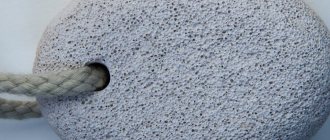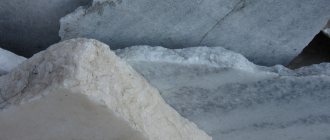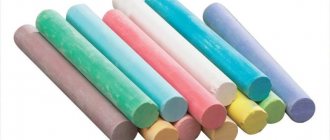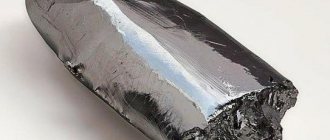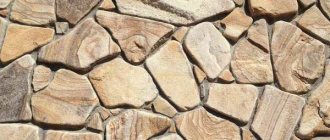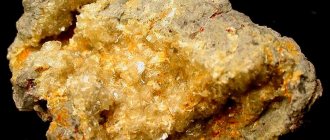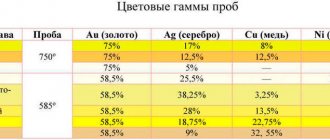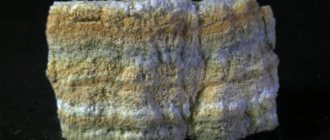Zeolite is a relatively new material for improving soil structure, which many gardeners know nothing about. Meanwhile, this is a common component of soil mixtures, not inferior in properties to perlite and vermiculite, and in some respects even exceeding them.
Let us tell you what zeolite is and what properties it has. We will also talk about the features of using the material in vegetable growing, floriculture and horticulture, and about application rates for different crops. We will give you the proportions for preparing your own soil mixtures.
What is zeolite
Zeolite is a mineral rock of volcanic origin that consists of tiny pebbles of various shapes. The structure of each particle is crystalline; inside it is literally permeated with microscopic channels, along which there are numerous cavities.
Zeolite has two unique properties:
- It can absorb moisture and, under certain temperature conditions, release it back.
- Capable of selectively absorbing or releasing various substances, including organic fertilizers, pesticides, and toxins.
In agriculture, crushed stone and sand are widely used, which are obtained by crushing zeolite tuff. Pebble-sized crushed stone is an excellent addition to alpine slides, and sand is added to soil and soil mixtures to improve their structure.
Only volcanic zeolite is suitable for agriculture. Oceanic (sedimentary) dissolves in water, forming a paste-like consistency.
How the stone was discovered
Zeolite is one of the few minerals whose “godparent” is known for sure. This is Swedish chemist Axel Kronstedt.
While conducting another experiment in the laboratory, he heated stilbite. Pieces of the mineral began to swell and bubbles appeared. They were born from water released during boiling.
The scientist identified other samples with similar characteristics. So in the middle of the 18th century, science was replenished with a new family of minerals, called the “parent” zeolites (from the ancient Greek zeo - boil and lithos - stone).
Natural zeolite
They didn’t know where to use the “boiling stones” then. For two hundred years, the results of the work were of purely theoretical value.
In the 1950s, the topic of water purification became topical. The stones interested scientists who were solving this problem. It was found that the mineral zeolite is a powerful sorbent. Without compromising the taste of water, it reduces the presence of calcium salts several times. Other chemical compounds could do this, but the advantage of zeolites was their prevalence and low price.
Useful properties and functions of zeolite
To improve the soil structure, only natural zeolite is used; its artificial analogues cannot cope with the tasks. In terms of its set of qualities, this material is superior to perlite, and does not cake as well as vermiculite.
After adding zeolite, the following changes are observed:
- clay soil becomes loose, its breathability and moisture capacity increase significantly;
- excess nitrates and heavy metal salts are absorbed by the material and do not enter the root system;
- plants do not experience a deficiency of potassium, magnesium, silicon and calcium - these substances are contained in zeolite, and in the most accessible form for absorption;
- due to its crystalline structure, zeolite retains organic substances and prevents them from being washed out;
- soil acidity is normalized - the material has a pH value of 5.5-5.6.
Beds with zeolite need to be watered less often, including in dry weather. The need for pesticide treatment is reduced: their active substances are retained in the zeolite sand and released into the soil as needed.
Cultivated plants, trees and shrubs suffer less disease and produce good harvests.
Advice from experienced flower growers
Zeolite can be purchased as a ready-made substrate and cat litter component. The latter are cheaper and can also be used for plants. But before use, toilet filler must be rinsed.
Zeolite of small and medium fractions is very convenient in hydroponics - a method of growing plants in artificial media. It is often used in indoor floriculture for succulents.
Leaf succulents and cacti feel great in zeolite and, under all other identical conditions, develop better than in organic matter.
Zeolite is an ideal substrate for orchids and violets. Moreover, it can be used in various ways:
Reviews for orchids are only positive: the roots grow 2-3 times more intensely than on ordinary soil or bark, the frequency of watering is reduced, the plants almost do not get sick, since their resistance to stress increases due to the silicon present in the substrate. Opinions differ about growing violets on zeolite, but mainly due to the fact that some gardeners have a fundamentally negative attitude towards growing flowers on any gravel.
Watercress or bedbug can be grown on a windowsill without any hassle, using zeolite as a substrate. This healthy, micronutrient-rich, unpretentious green vegetable crop does not require feeding. To get a rich harvest of watercress, you only need to water it occasionally, and everything else will come from the substrate.
Ocean zeolite is not suitable for plants - it dissolves. Therefore, if the packaging says volcanic mineral rock zeolite, as well as the word “oceanic” or “zeolite-containing clay, large granules,” do not buy it for plants.
Source
Features of the use of zeolite in agriculture
The scope of use of this material is extensive: from creating substrates for germination and stratification of seeds to application for autumn plowing and creating soil mixtures for seedlings. Each option requires detailed consideration.
Zeolite for pre-sowing seed preparation
Savvy gardeners quickly realized that it is more convenient to germinate seeds on zeolite than in sand. The scheme is simple: zeolite is scattered in a thin layer on a damp cloth, then the seeds are distributed.
The method has several advantages:
- the required level of humidity is maintained, which is why the seed shell does not dry out;
- there is no excess moisture, so mold will not develop;
- resistance to root rot increases.
Another plus is that the material does not allow seeds to grow deep into the tissue, which means the roots will not be damaged.
The smallest seeds can be mixed with zeolite before sowing to make work easier.
Processing bulbs before planting
Zeolite can be used to treat bulbs, as well as the roots of seedlings if they are grown with an open root system. For these purposes, fine zeolite powder is used; it can be found in gardening stores. According to the norms, about 50 g of powder is required for 5 kg of planting material.
This processing serves several purposes:
- Reduces stress levels when planting seedlings;
- Provides essential nutrients for the first time.
- Reduces the likelihood of damage to the membranes of roots and bulbs.
You can also powder seedlings of trees or shrubs sold with an open root system. The effect of the treatment will be similar.
The treated planting materials are laid out to dry for 2 hours, then planted in the ground.
Application for indoor flowers
Zeolite is suitable for adding to soil mixtures for indoor plants and succulents. Depending on the type, different proportions are used. For most flowers and plants, a mixture is used in which zeolite occupies ⅓ of the total volume.
For succulents, soil is mixed with zeolite in a 1:1 ratio. You can also mix zeolite with peat in a 1:2 ratio; this mixture is also suitable for growing cacti.
There is positive experience in using zeolite as a mulch layer in pots.
Application for lawn renewal
The lawn is periodically updated by adding river sand. It can be replaced with zeolite, which provides better air exchange and prevents moisture from stagnating on the surface of the lawn, absorbing its excess.
Instructions for improving your lawn:
- Mix peat, fertile soil and zeolite in equal proportions.
- Spread the mixture over the lawn in a thin layer.
- Level it with a rake, slightly loosening the surface.
After this treatment, the condition of the lawn grass improves. This is explained by better absorption of nutrients by the roots. Sanding is done in early autumn or spring, before grass begins to grow.
Differences from other supplements
As a means for fertilizing vegetables, agricultural crops and ornamental flowers, zeolite compares favorably with most competitors, even those that are more expensive and difficult to obtain. This is achieved due to its heaviness and uniformity - among its crystals there are practically no small and dusty particles harmful to the plant.
Differences between the mineral and other additives:
- Zeolite differs from its main competitor, vermiculite, by its better ability to retain moisture and less tendency to compact the soil. The mineral has a more uniform composition - it does not contain dust, as well as too small or large particles, which the competitor is rich in. This allows it to better nourish the roots of plants, while protecting them from waterlogging.
- In terms of properties, perlite is closest to zeolite. It has almost similar properties, but loses quality over time. When left in the ground for a long time, perlite crumbles into smaller particles, becomes covered with a layer of sediment, or is completely washed out of the soil. Zeolite is more durable and retains its beneficial properties unchanged for many years.
- Sand is not suitable as a soil loosening agent: it is too fine, therefore it contributes to the cementation of the soil and impairs the respiration of roots. To get a decent supplement, it needs to be very carefully sifted and sorted. Zeolite is free from these disadvantages.
- Fine gravel is heavier than zeolite. Because of this, it takes longer to assemble and change.
- Opaque clay is a good substitute for zeolite, but it requires washing and does not supply the plant with moisture as well.
- Broken brick is almost as good as mineral in properties, but it is more expensive and difficult to obtain. It must be selected, chopped, and sifted to remove excess dust, while zeolite can simply be purchased ready for use.
There are other fillers for plants: peat, coconut shells, pieces of bark. But they differ from zeolite in their functions and role, so it makes no sense to compare them.
The nuances of using zeolite in the country
According to research results, the use of zeolite as a component for soil increases plant productivity in the first year by 15–30%, in the second – by 40–50%. Such indicators are maintained for five years.
The table shows the rate of application of zeolite to the soil, taking into account the crops grown,
| Category | Standard consumption rate |
| Vegetables | 2.5–5 kg/10 sq.m. |
| Strawberry | 2.5 kg/10 sq.m. |
| Berry bushes | 5 kg/10 sq.m. |
| Lawn | 3 kg/10 sq.m |
| Fruit trees | 1 kg per planting hole |
| Container plants | Together with soil in a ratio of 1:4 |
It is allowed to dust potato tubers before planting. The consumption rate in this case is 100 g/10 kg of planting material. The treated potatoes are kept in the air for 2 hours, then planted in the usual way.
You can prepare an excellent complex fertilizer yourself by mixing humus with zeolite in a 1:1 ratio. This composition improves the characteristics of the soil, while simultaneously saturating it with organic matter for 10 years to come.
Recipes for soil mixtures can be found in the table
| Purpose of application | Components used (in parts) | |||
| Zeolite | Peat | Humus | Fertile soil* | |
| For seedlings | 1 | 1 | 1 | — |
| For lawns and flower beds** | 1 | 2 | 2 | 1 |
| Mulch | 1 | 2 | — | — |
*You can use purchased soil for plants.
** The mixture is suitable for growing seedlings of coniferous and fruit trees, shrubs of any kind.
The healing effects of the mineral
The abilities of zeolite are known even to the indigenous inhabitants of Oceania and Africa. They offer an edible variety of the mineral to guests after a heavy feast with alcohol. This eases hangovers or overeating.
The capabilities of the mineral are used in medicine:
- medications effective for food poisoning and flatulence (for example, the widely advertised Smecta);
- the mineral accelerates the healing of wounds in diabetes;
- in cosmetics these are therapeutic muds, masks that rejuvenate the skin; scrubs that remove cellulite.
For healthy people, the use of zeolite is indicated as a prophylactic agent for the following purposes:
- strengthening the immune system and nervous system;
- normalization of stomach acidity;
- removing toxins from the body that enter through food, water or air;
- everything related to microelements in the body: maintaining balance; prevention of diseases associated with their deficiency or excess.
A person who uses preparations with zeolite feels a surge of strength, is energetic, and works more productively.
However, in Russia only clinoptilolite, which serves as the raw material for the Litovit product, is certified as medical.
How to use the stone
The rules for using the mineral are simple:
- Beads, bracelets or pebbles neutralize headaches, muscle spasms, and normalize blood pressure. They treat the spine, gynecology, urology, angina, liver, sinusitis.
- For treatment, a warm pebble (dipped in hot water) is applied to the problem area of the body.
- Zeolite baths (100 g of powder per two liters of water) help with varicose veins, fungal skin lesions, and swelling.
Beautiful zeolite stone
As healing stones, the stones are “reusable”, but after each healing session they are washed and dried in the sun.
